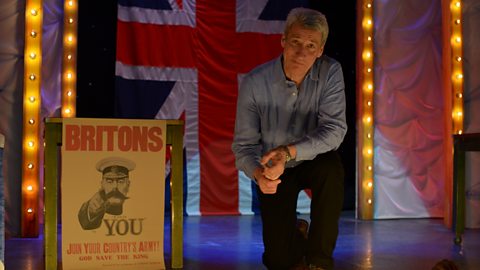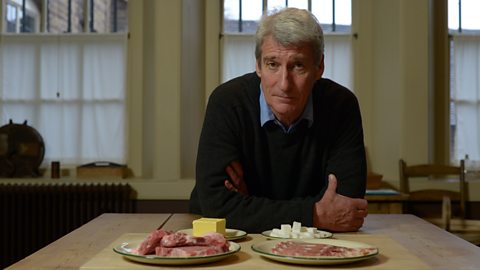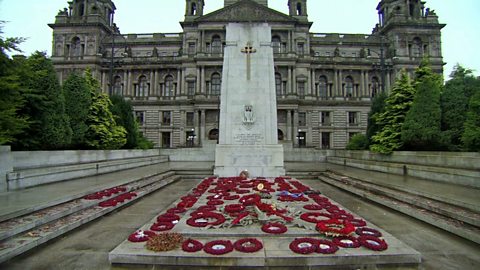Video summary
With a German victory in sight in the spring of 1918, a huge effort by the British workforce helped to turn the war in the Allies favour, by keeping the troops supplied with coal and munitions.
Jeremy Paxman reads the words of British army commander General Sir Douglas Haig in April 1918, telling his men to fight on until the end, as we see archive footage of battlefield devastation.
He visits a mine in South Wales, and explains how British workers suspended strikes, worked through their holidays and volunteered for extra shifts to support the war effort.
Munitions workers, miners and shipbuilders all took part in this extra help for the troopsβ supply chain, and men in protected industries volunteered themselves to fight.
Whilst the home front in Britain pulled together, Germany experienced strikes, demonstrations against the war and hunger due to Allied blockades, all of which helped diminish German morale.
The arrival of US troops to support the Allies is also discussed as a factor in turning the tide of the war.
Teacher viewing recommended prior to use in class.
Teacher Notes
Key Stage 3:Use as an access point to the idea of protected jobs in the war. Might be used as a decision making task to include conscientious objectors, in identifying those who were not involved in direct combat._
GCSE:Use as a prelude to the post war debate of was Britain a βLand fit for heroesβ to provide context for continuing working class discontent in post war Britain.
National 5/ Higher:Use as an introduction to the effect of the war effort at home on the course of the war and changing industrial relations. Students could concentrate on industries in their local area or more general Scottish examples. What part did the chosen industry play? What scale of effort was involved? what were relations between workforce and management like at this time? How different was this industry before, during and after the war?
This clip will be relevant for teaching History. This topic appears in at KS3 in England, Wales and Northern Ireland and OCR, Edexcel, AQA and WJEC/Eduqas GCSE/KS4 in England and Wales and CCEA GCSE in Northern Ireland. It also appears in National 5 and Higher in Scotland.
How Britain declared war in WW1. video
Jeremy Paxman explores the declaration of war after Germany invaded Belgium in 1914.

Your country needs you! video
Jeremy Paxman explains Lord Kitchener's iconic recruitment PR campaign of WW1.

Crushing defeat in the first battle of WW1. video
Jeremy Paxman explores how Britain suffered defeat at the Battle of Mons.

The ΒιΆΉΤΌΕΔ Front. video
Jeremy Paxman explains how German u-boats crippled the country and led to rationing and the ΒιΆΉΤΌΕΔ Front.

WW1 poetry and shell shock. video
Jeremy Paxman looks at the mental health problems suffered by poet Siegfried Sassoon and soldiers in the First World War.

Treating Indian soldiers at Brighton Pavilion. video
Jeremy Paxman explains how a former royal residence became a hospital for injured soldiers in WW1.

Air raids and the bombardment of Britain in WW1. video
Jeremy Paxman explains the unprecedented bombardment of Britain in World War One.

The dangerous jobs of women in WW1. video
How women entered the workforce and took up dangerous roles to support the war effort.

1918: the end of the war and Remembrance Day. video
Jeremy Paxman describes the end of the First World War.
